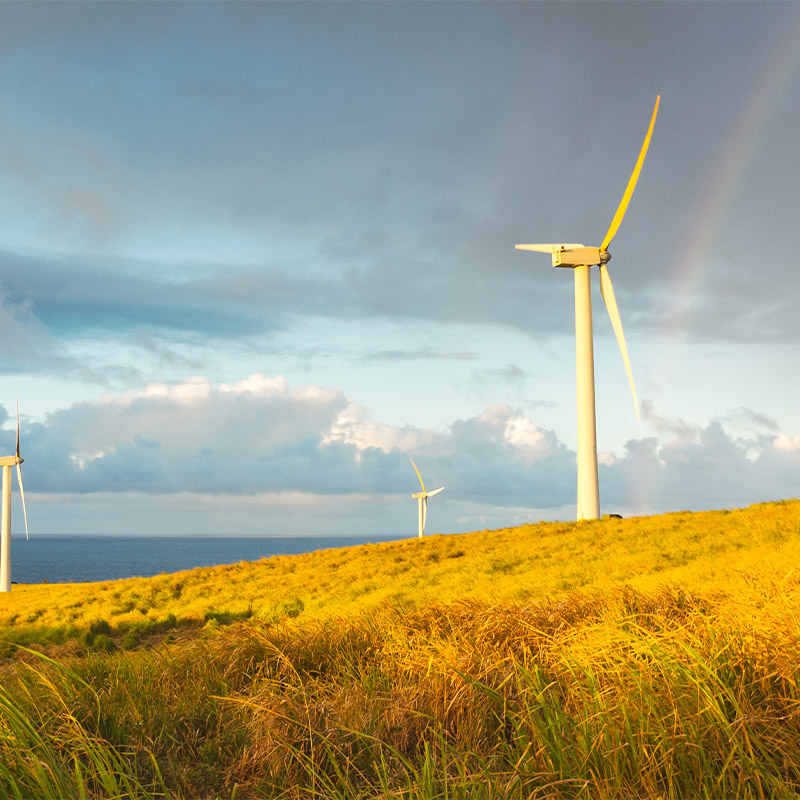
The USA in 2020; Red, White, Blue and Green
The USA in 2020; Red, White, Blue and Green
By Harry Davies, Country Manager USA, harry.davies@greenrecruitmentcompany.com
Green is the most important primary colour
All eyes will be on the US in 2020. And not just because of the pending Presidential election later in the year, but also as renewable energy continues to make strides across the country. For this article I thought I’d focus on four different states to highlight how green energy is likely to develop in the USA this year.
Hawaii
Despite the best efforts of some to revive the fossil fuel industry, flying in the face of the need for sustainable energy, the Aloha state has been dancing to a very different beat. The island state has mandated itself to generate at least 30% of its energy from renewable sources by this year and to be at 100% by 2045.
Hawaii is continuing to be at the vanguard of emissions-free technology, building, and planning for more, flexible renewable power and storage plants – catchily named PV (Photovoltaic) Peaker Plants. Designed to respond to periods of peak demand for electricity, Hawaii already has one in operation on the island of Kauai and is actively pushing to have another up and running by the end of this year.
Hawaiian Electric, the main energy player in the state, is presently considering 75 further new technology renewable energy proposals, including solar and wind energy storage. Two of the proposals under consideration are for Hawaii’s two largest coal and oil power plants to be completely replaced by 2024.
Rhode Island
Rhode Island may be the smallest state in the US, but when it comes to renewable energy, it’s looking at seriously big strategies for the future. Rhode Island is already the country’s number one when it comes to offshore wind energy, with its first off-shore windfarm, the very first in the US, commencing operation in 2016.
On January 17th just gone, Governor Gina Raimondo signed off on an executive order requiring the state’s Office of Energy Resources to come up with a blueprint for how Rhode Island can be 100% renewable energy sufficient by 2030. That is considerably faster than what the federal government has mandated and what other states with the same goal have proposed (in some cases by up to 10 years). The proposal has wide-spread support from environmentalists, trade unions and renewable energy players.
Raimondo has good pedigree when it comes to target-setting. She is presently on course to see the Ocean State increase its renewable energy supply ten-fold by the end of this year.
Texas
The Lone Star state goes into 2020 from where it left off in 2019 – pressing on with its significant growth in renewable energy. Defying the stereotype of being fossil-fuel fixated, last year Texas was responsible for more than a quarter of all corporate renewable energy deals around the globe.
Additionally, by the end of 2019, Texas was generating 27 gigawatts of wind power – making it the fifth only behind four other countries.
Cheap, renewable energy is increasingly a major attraction for corporations both in the US and world-wide, and Texas is more than willing and able to oblige, earning the moniker of being the “wild west of wind power”, with local, state and federal law allowing ongoing conducive conditions for renewable energy business in the state
According to energy research and business intelligence company Rystad Energy, by 2020, Texas will be set to receive more energy from wind power than coal. And it’s not just wind power - solar is basking in the Texan sunshine too. Solar energy capacity is set to double in 2020 and then do the same again in 2021.
Virginia
In January of this year, the Virginia Clean Economy Act (VCEA) began its legislative passage through the Virginia Assembly. Once passed, the new law will put Virginia on a committed path to achieving a 100% clean and renewable electricity grid by 2050.
The VCEA, promoting a mix of both smart energy use and generation, offers a range of benefits for the Commonwealth’s citizens and economy, including the creation of 13,000 new jobs a year and producing an estimated $67.9 billion in net benefits for Virginians.
The legislation would also allow for Virginia to press on with its participation in the Regional Greenhouse Gas Initiative (RGGI) – a free-market conglomeration of regional east coast states looking to reduce carbon emissions from fossil fuelled power-plants.
Irrespective of party politics, a sizeable majority of Virginians support clean energy, with 73% of registered voters broadly supporting their legislators in enacting the proposed VCEA initiative.
So, what does this all mean for renewables in the USA?
Across the globe, election years in democracies can have an adverse impact on business and infrastructure. Typically, players tend to wait until after elections to kick on with projects. This year however it seems that the upcoming elections, will have no adverse impact on the rise of renewable energy in the USA, because regardless of whether a state goes blue or red this year, they’re all going green!
